Buildings can tell us a lot. Silently watching the decades pass by, architecture bears traces of human activity on its face, collecting memories and telling stories of the people who have lived in and around it. Sometimes, the stories they tell are not so pleasant.
In 2019, photographer Antonio Aragon captured an image of a child in Togo sleeping on the floor of what remains of his house — a shell of a home that, like many buildings on the West African coast, has been destroyed by coastal erosion caused by rising sea levels. The crumbling structure is a grim reminder of humanity’s disregard for the climate and the gravity of the consequences.

Photographs like Aragon’s remind us why the United Nations has put Climate Action and Sustainable Cities and Communities on its list of 17 Sustainable Development Goals. Severe weather and changing environments coupled with rapid urbanization is placing millions in unhealthy and unsafe living conditions, and decaying buildings serve as a reminder of this phenomenon.
In his work, artist Seth Clark gives voice to deteriorating architecture. Though his practice isn’t explicitly environmentalist, it is touching on something that lies at the very core of climate change and so many of the issues that we face today — human neglect. We often call old, dilapidated buildings “neglected”, but only on rare occasions do we stop to ask: neglected by whom?
“The buildings, often on the brink of ruin, have something very energized and present trying to escape from their fragmented reality,” writes Clark about his practice.
Through his intricately constructed collage and sculptural works, he brings forth these so-called eye sores, the derelict houses that we’ve deemed devoid of value, asking us to take a second look at what they have to say about us and our actions.
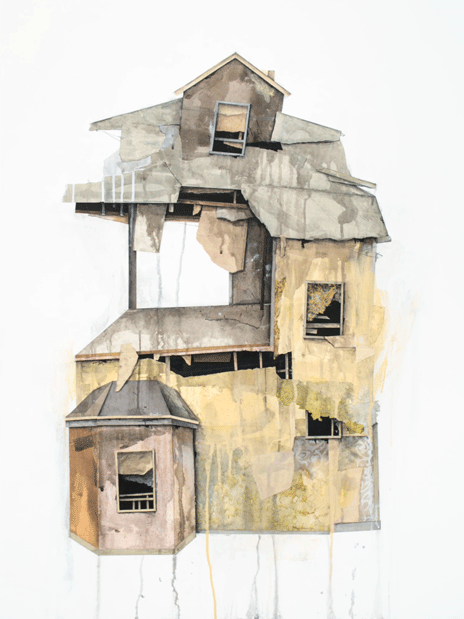
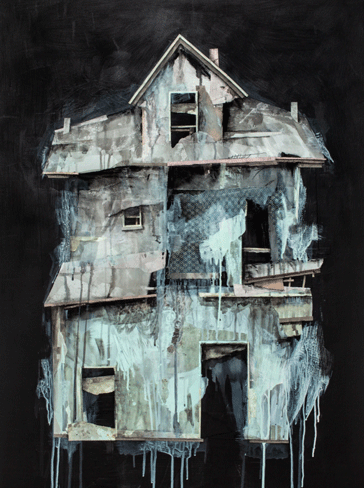
His series entitled In Isolation embodies this practice. The collection of multimedia artworks portraying rickety, eroding homes is a continuation of Clark’s exploration of the architecture in which we spend our lives. Using his signature collage technique, Clark applies layers of used paper shreds, the torn parts coming together to construct the whole, echoing the layered histories of his subject matter. On this process he writes, “I collage with found paper to reflect the fragmented and complex tactility of decay.”
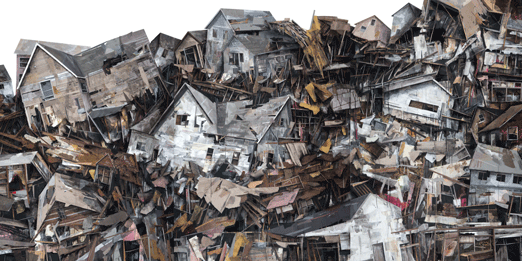
At 12-feet-long, his piece Mass II, made of collage, charcoal, pastel, graphite and acrylic on wood, is where the series crescendos into an energetic amassment of broken houses and cluttered debris. In an interview with South Philly Review, Clark speaks about how the piece came about, saying, “At the time, I was exploring imagery from the Johnstown Flood of 1889, where the dam of a hunting and fishing club broke due to human neglect causing over 2,000 deaths.”
He recalls looking at the completed Mass II years later and seeing its battered, struggling form as a reflection of America’s current condition. “I think the chaos, the neglect, the upheaval – it can all be found in that work.”
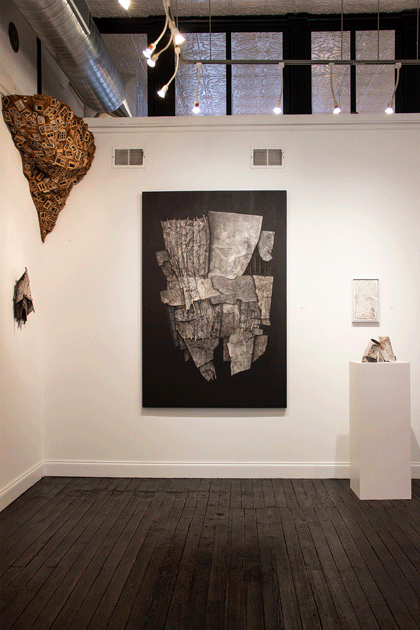
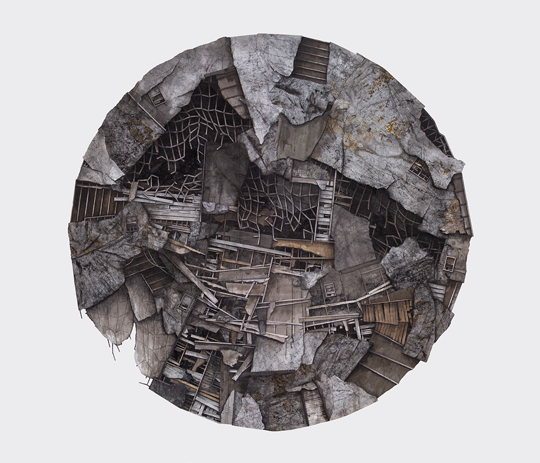
In other exhibitions like Transience and Fragmentation, Clark presents us with more abstracted representations of decay. He zooms in, centering our focus on the physicality of decay, on the chipped paint on wood and the warped metal frames that could one could find anywhere, even in our own hometowns.
“These structures, designed to be huge forces of permanence, are continually being challenged, destroyed and forgotten,” writes Clark. “I see an inherent honesty in the face of my subject. Among all of the clutter—the shards of wood and layers of rubble—there remains a gentle resolve.”
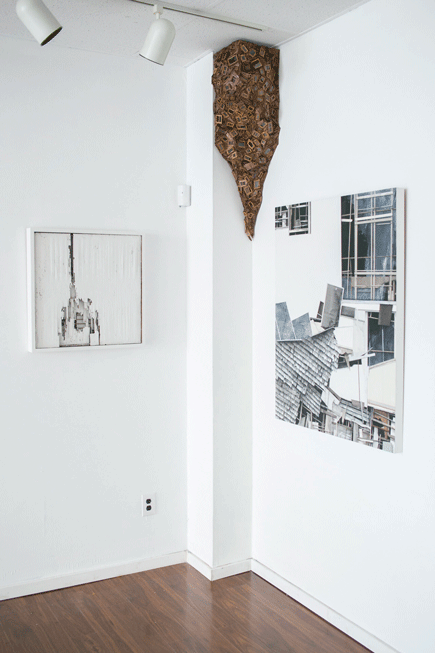
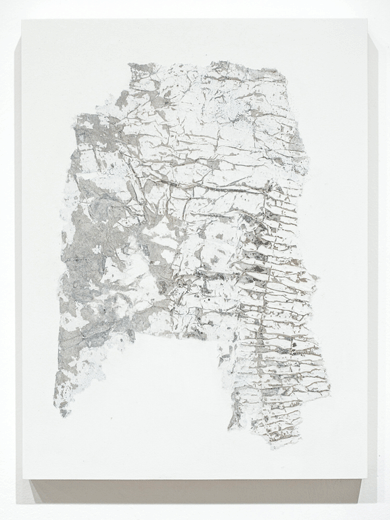
With these words and through his art, Clark reminds us of something we easily forget. Whether it's climate change or unsustainable urban growth, the effects of our actions are collected on the buildings we see everyday. Clark’s work reminds us that the rusty, crumbling skeletons that we often pass by without so much as a thought are telling us something that we may want to hear. We just need to stop seeing them as eye sores and start listening to what they have to say.
To see more of Seth Clark's work, click here.
